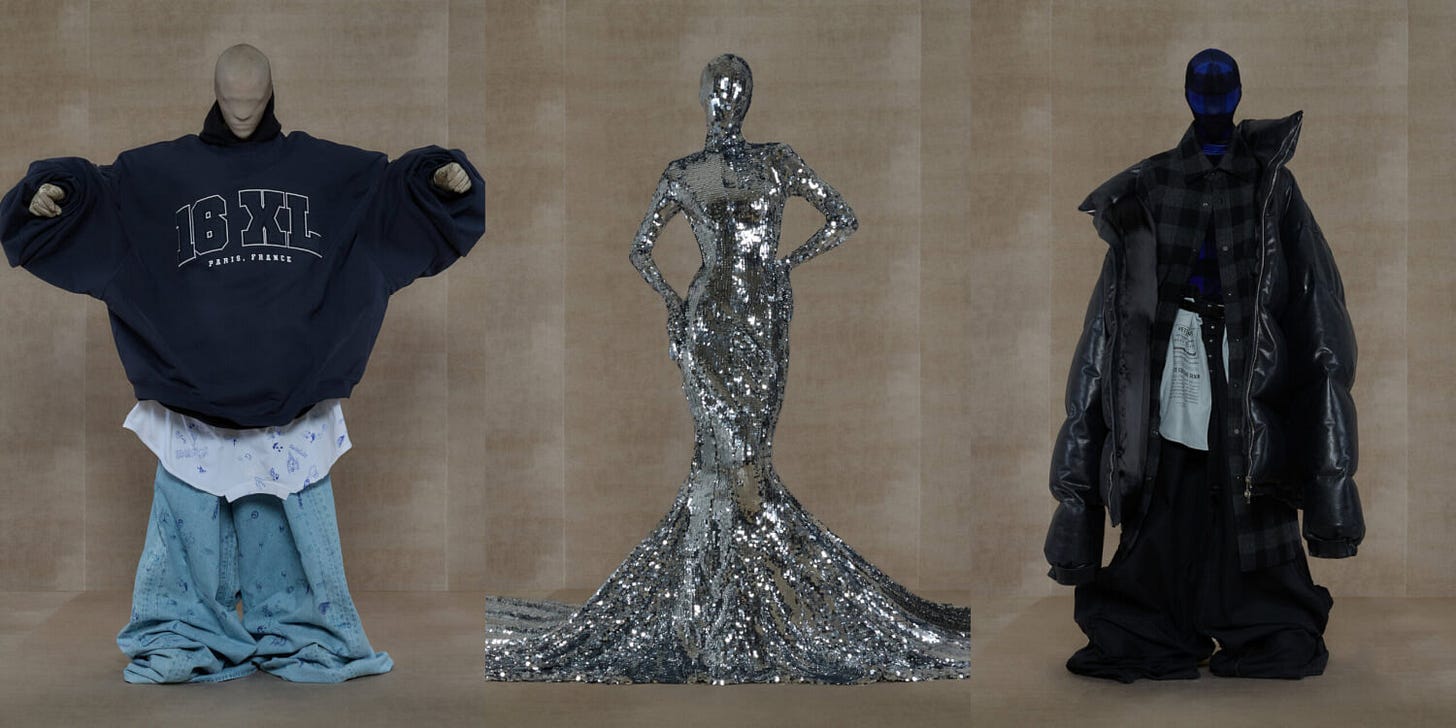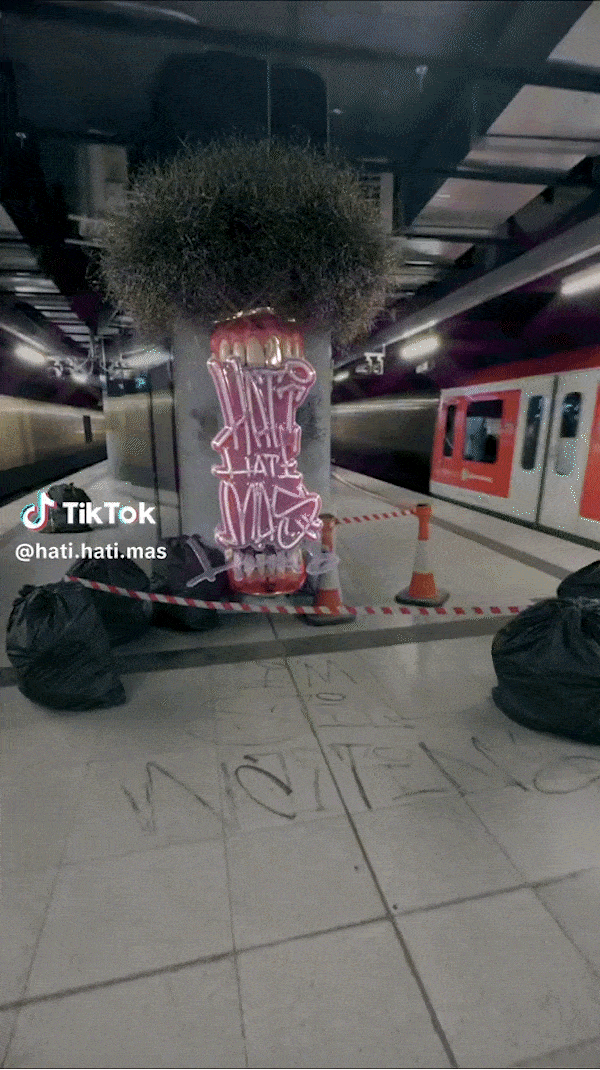Clothes against AI
EYES ON: VETEMENTS SS24 collection
This year, the fashion world found its newest muse — AI. Enlisted to explore new designs, or just to stay new, AI has been all over the place. But in VETEMENTS’ SS24 collection, the brand supposedly took a contrary stance, and created an "ANTI-AI" collection.
The collection is made up of wildly large clothing. From evening dresses to streetwear, each piece plays on an exaggerated essence. But where’s the AI? According to the creative director, Guram Gvasalia, the larger than life sleeves is where its located.
He says, “I wanted to create physical objects that would look and feel like AI-generate units” but then be executed with the quality and crafstmanship which “can only be done by human hands and with a passion that no machine can have.”
WHY WE’RE WATCHING:
This all seems like a bit of a reach, like an excuse to say the word AI without having to have anything to do with it.
What does it actually mean to be Anti-AI in fashion? What does that even look like in a piece of clothing?
If by AI Guram Gvasalia just means non-human sized, then sure. But of course clothes made with human hands are made with more “passion” than clothes made by a machine. Who in their right mind would disagree. Passion has little to do with AI.
So, what are these clothes actually standing against? In adopting a stance that is impossible to see in its clothes, the collection’s use of the word AI is rather meaningless — a bogeyman for a slew of other things (or nothing?).
To top it off, and reveal how strongly these Anti-AI beliefs are held, the collection’s press release was “finished off by Chat GPT.”
What? That says it all. It’s confused. Where’s the conviction? Why unnecessarily use AI to explain your Anti-AI stance if it could be written by human hands. With passion.
Fashion’s a Joke
EYES ON : Meaningful Existence and other ironic outerwear
Long before any scandals, Jonah Hill’s clothing brand, Meaningful Existence, launched with the simple goal to “spread joy throughout the universe by monetizing happiness.” A blatantly satirical brand, Meaningful Existence revolves around Hill as the “Profit Ezekiel Profit” (two “profits” to ensure no one is actually duped). Hill is the supposed leader of a cult, echoing the claims of established wellness and lifestyle brands.
With quotes like, “material goods and possessions are fundamental to living a Meaningful Existence. We could all afford to buy a little more”, the brand is no more than a means of making a point. It’s a joke, taken to its furthest extreme.
WHY WE’RE WATCHING:
To criticise the system that sells you things that are said to change your life, the brand sells you things they say will change your life. It’s full circle ironic. It starts and stops with the point. The words are borrowed from cult brands seen on instagram along with the fonts (see Maya Man’s Fake it Till You Make It for a full spectrum of that visual dictionary). All design choices are sacrificed for the point.
With brands like this popping up everywhere (Hill’s brand is not unlike the hugely popular brand Praying), we find ourselves increasingly in a hellish world of ironic self reflections. In this world, clothes are more likely to comment on culture than to actually become culture. Like many things today, so drenched in irony, we can’t even take our clothing seriously.


Art Made on Digital Streets
EYES ON: Digital Street Art
“Digital street art” is popping up all over social media. Art made through mixed reality tools, blending the physical and the digital, these videos take real environments and infuse them with visual elements reminiscent of the culture of street art. Now, fast-moving, fantastical and engrossing like a reel, “digital street art” has been hailed as a new, dynamic medium, which takes street art to new heights. Easier than ever to make, digital street art is meant to increase access to the art form.
WHY WE’RE WATCHING:
But can we just call it street art because it includes a street? Street art isn’t meant to be easy to make. Neither is it meant to be out of this world.
Street art, in its original context, is political. It’s about public spaces, and ownership of those spaces. And so, a large part of it is about the very real physical site of the art and what that means for how, and by whom, it is viewed. People walk past it, forced to view something they might not want to, confronted by a visual conversation started by the people living in that specific space.
Whereas, in the digital, viewing street art is entirely consensual. Digital street art is pure entertainment. It’s non-confrontational — no stakes, no consequences — it’s about no one and nowhere.
DRAUP SPOTLIGHT
Our COLLECTION #00 from new angles
In the digital, 3D is all about lighting. So, we’ve created new controls in our wardrobe to give new views of our clothes in different lighting environments.
Check it out.














Amazing article!